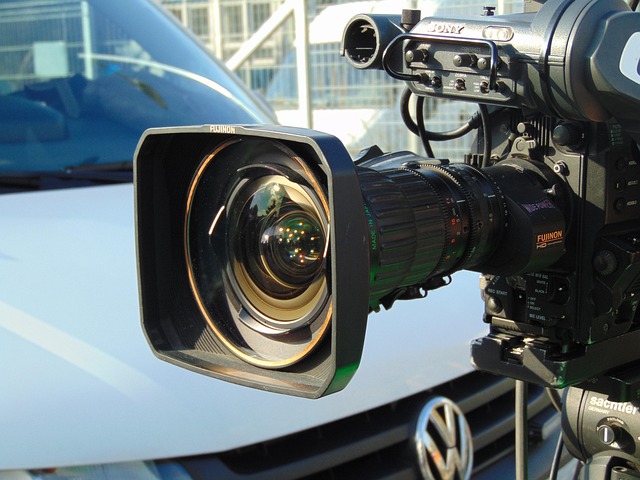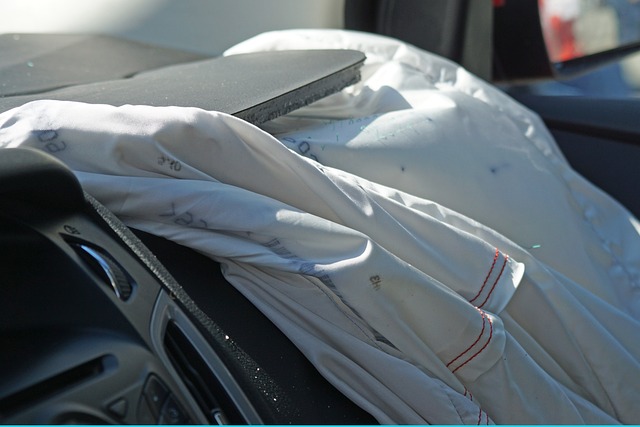Collision coverage is essential auto insurance that protects drivers from financial strain post-accidents by covering vehicle repairs and medical expenses. It's crucial to understand exclusions, limitations for high-risk drivers, and tailor policies to individual needs. Choosing the right plan involves comparing deductibles, covered parts, and collision types. Filing a claim efficiently requires prompt notification, accurate information, and documentation. Businesses can optimize resources with advanced systems and customizable policies, reducing downtime and costs. Regularly review and update collision coverage based on vehicle age, driving habits, and local hazards to stay prepared for unexpected events.
Collision coverage is an essential aspect of auto insurance, offering protection against unexpected vehicle damages. This article serves as a comprehensive guide, exploring various facets of collision coverage solutions. From understanding what’s covered and potential exclusions to choosing the right policy and filing claims, we demystify this crucial component. We also delve into different policy types, real-life case studies, common mistakes to avoid, and expert tips for enhanced protection. By the end, readers will be equipped with knowledge to make informed decisions regarding their collision coverage needs.
Understanding Collision Coverage: What It Covers and Exclusions

Collision coverage is a crucial component of auto insurance, designed to protect drivers from financial burden in case of accidents. It primarily covers damages resulting from collisions, whether with another vehicle, object, or even itself. This includes repairs to both your vehicle and the other party’s, as well as medical expenses for any injured parties.
However, it’s important to understand that collision coverage does have exclusions. Common exceptions include damage caused by intentional acts, natural disasters, or wear and tear. Additionally, certain high-risk drivers may face limitations or higher premiums due to pre-existing conditions or a history of claims. Knowing these details is essential when navigating the complexities of auto insurance policies to ensure you’re adequately protected.
The Importance of Adequate Collision Insurance for Vehicles

In today’s world, where vehicle-related accidents are a common occurrence, having adequate collision insurance is more than just a consideration—it’s a necessity. Collision coverage plays a pivotal role in protecting individuals and their assets from financial ruin following a car accident. Without proper collision insurance, the financial burden of repairs or medical expenses can be immense, often leaving policyholders with significant out-of-pocket costs they might not be able to bear.
Collision coverage ensures that these unexpected events are manageable by offering financial assistance for vehicle repair or replacement, as well as medical bills and other associated costs. This proactive measure allows policyholders to focus on recovery rather than financial stress, providing peace of mind and ensuring they can get back on the road safely and affordably.
Different Types of Collision Coverage Policies Available

Collision coverage options vary depending on your needs and budget. Comprehensive collision insurance covers damages beyond what a typical liability policy offers, including incidents like theft, vandalism, or natural disasters. This type of policy is ideal for those who want complete protection for their vehicles. On the other hand, collision coverage specifically caters to accidents involving another vehicle or stationary object. It repairs or replaces damaged parts and can be chosen as an add-on to your liability insurance.
When selecting a collision coverage policy, consider factors like deductibles—the amount you pay out of pocket before insurance kicks in—and the type of repairs covered. Some policies may have limitations on repair facilities or parts, so reading the fine print is essential. Each option has its advantages, ensuring vehicle owners can find the right balance between protection and affordability.
Factors to Consider When Choosing a Collision Coverage Plan

When selecting a collision coverage plan, several factors come into play, ensuring you get comprehensive protection tailored to your needs. Firstly, evaluate your vehicle’s make and model; some older or high-performance vehicles may require specialized coverage due to their unique parts and repair costs. Secondly, consider your driving history; if you have a clean record, you might qualify for better rates, whereas accidents or violations could impact your premium.
Additionally, the extent of collision coverage options should be examined. This includes understanding deductibles, which are the out-of-pocket expenses you agree to pay when filing a claim. Lower deductibles mean higher premiums, so decide based on your financial comfort and potential repair costs. Other considerations involve the types of collisions covered (e.g., accidents with other vehicles, fixed objects) and any specific exclusions or limitations within the policy.
How to File a Claim with Your Auto Insurance Provider

When a collision occurs, filing a claim with your auto insurance provider is a crucial step in the process of getting your vehicle repaired and ensuring financial protection. The first step is to assess the damage and gather necessary information from the scene. This includes taking photos of the damaged areas, collecting contact details of other parties involved, and noting down the circumstances surrounding the collision.
Once prepared, you can contact your insurance provider to initiate the claims process. They will guide you through their specific procedures, which typically involve reporting the incident, providing detailed information about the damage, and potentially scheduling an inspection. It’s important to have all the relevant details at hand, such as your policy number, claim number, and any supporting documents like police reports or repair estimates. Efficient communication with your insurer will ensure a smoother claims journey and facilitate faster collision coverage benefits.
Common Mistakes to Avoid When Dealing with Collision Claims

When dealing with collision claims, there are several common mistakes that policyholders often make, which can lead to delays or even denial of their claims. One of the biggest blunders is failing to notify the insurance provider promptly after an accident occurs. Time is of the essence in these situations; immediate notification allows for swift investigation and documentation of damages. Additionally, it’s crucial to avoid accepting any liability without first assessing the circumstances and gathering relevant evidence, such as police reports and medical records.
Another mistake to steer clear of is providing inaccurate or incomplete information when filing a claim. This includes omitting details about the accident, underestimating the extent of damage, or failing to disclose previous claims. Insurance companies conduct thorough investigations, and any discrepancies or deceitful practices may result in claim rejection. It’s always best to be transparent and provide all necessary documentation to facilitate a smoother process.
Case Studies: Real-life Examples of Effective Collision Coverage

Collision coverage is a vital component in any comprehensive insurance policy, and its effectiveness can be best understood through real-world examples. Case studies show that well-designed collision coverage solutions have significantly minimized losses and streamlined claims processes for businesses and individuals alike. For instance, a study of a small manufacturing company revealed that implementing advanced collision detection systems and immediate notification protocols reduced production downtime by 30% after an accident, thanks to swift response times enabled by their collision coverage provider.
Another compelling case involves a logistics firm, where customizable collision coverage policies led to a 25% decrease in insurance costs over two years. By analyzing historical data and introducing proactive safety measures, the company minimized high-risk scenarios, ultimately improving overall operational efficiency. These examples highlight how tailored collision coverage strategies can not only mitigate risks but also optimize resources, ensuring businesses remain competitive and resilient in their respective industries.
Tips for Staying Protected Beyond the Standard Collision Policy

Staying protected beyond the standard collision policy is essential for drivers looking to mitigate risks on the road. One key tip is to consider adding comprehensive coverage to your insurance plan. This type of coverage protects against non-collision damages, such as theft, vandalism, or natural disasters. By including comprehensive in your policy, you ensure that unexpected events don’t leave you financially vulnerable.
Additionally, regularly reviewing and updating your collision coverage is vital. As vehicles age or usage patterns change, so do risks on the road. Assess your driving habits, the type of vehicle you own, and potential hazards in your area to make informed adjustments to your policy. Staying proactive about your Collision Coverage ensures that you’re always prepared for unforeseen circumstances.
